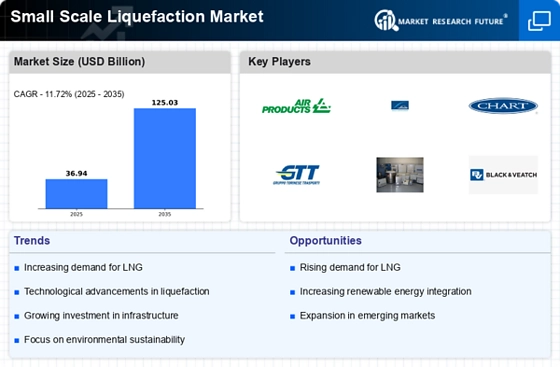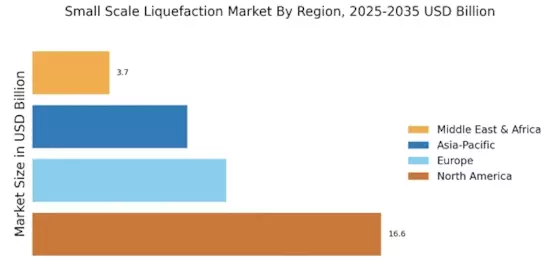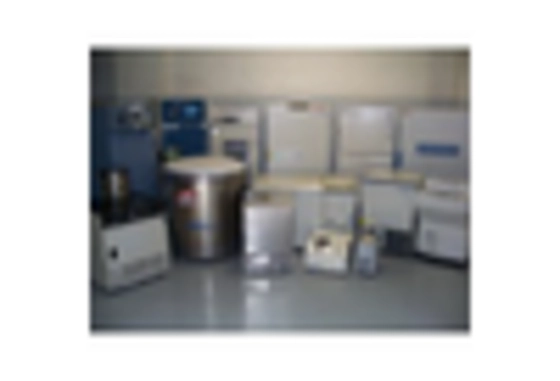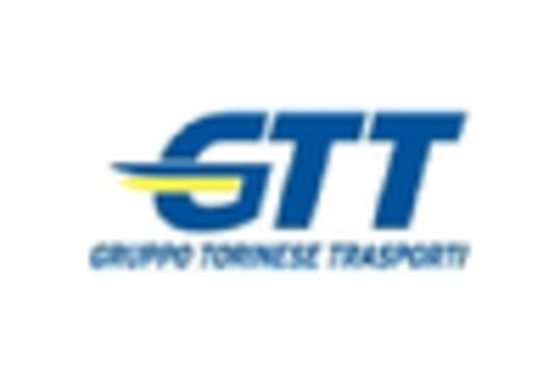Rising Demand for Natural Gas
The increasing demand for natural gas as a cleaner energy source is a primary driver for the Small Scale Liquefaction Market. As countries strive to reduce carbon emissions, natural gas is often viewed as a transitional fuel. In 2025, the demand for liquefied natural gas (LNG) is projected to reach approximately 500 million tons, indicating a robust growth trajectory. This shift towards natural gas is further supported by various government policies aimed at promoting cleaner energy solutions. Consequently, the Small Scale Liquefaction Market is likely to experience heightened activity as more facilities are developed to meet this demand.
Decentralization of Energy Supply
The trend towards decentralization in energy supply systems is significantly influencing the Small Scale Liquefaction Market. As energy consumers seek more localized and reliable sources of energy, small-scale liquefaction plants are becoming increasingly attractive. These facilities can be strategically located near consumption points, reducing transportation costs and enhancing supply security. In 2025, it is estimated that the number of small-scale liquefaction projects will increase by 20%, reflecting a shift in how energy is produced and consumed. This decentralization trend is likely to drive innovation and investment within the Small Scale Liquefaction Market.
Investment in Infrastructure Development
Investment in infrastructure development is a crucial driver for the Small Scale Liquefaction Market. Governments and private entities are increasingly recognizing the need for robust infrastructure to support the growing demand for LNG. In 2025, global investments in LNG infrastructure are expected to exceed 30 billion USD, facilitating the establishment of new liquefaction facilities. This influx of capital is likely to enhance the operational capabilities of small-scale liquefaction plants, making them more efficient and cost-effective. As a result, the Small Scale Liquefaction Market is poised for substantial growth, driven by these infrastructure advancements.
Regulatory Support and Policy Frameworks
Regulatory support and favorable policy frameworks are essential drivers for the Small Scale Liquefaction Market. Governments worldwide are implementing policies that encourage the development of LNG infrastructure and promote the use of natural gas. In 2025, several countries are expected to introduce incentives for small-scale liquefaction projects, including tax breaks and subsidies. This supportive regulatory environment is likely to stimulate investment and innovation within the industry, making it more attractive for stakeholders. As a result, the Small Scale Liquefaction Market is anticipated to flourish under these favorable conditions.
Technological Innovations in Liquefaction Processes
Technological innovations in liquefaction processes are transforming the Small Scale Liquefaction Market. Advances in cryogenic technology and process optimization are enabling more efficient and cost-effective liquefaction methods. For instance, new modular liquefaction systems are being developed that can be deployed quickly and with lower capital expenditure. These innovations not only enhance the economic viability of small-scale projects but also improve the overall efficiency of LNG production. As these technologies continue to evolve, they are likely to attract further investment and interest in the Small Scale Liquefaction Market.


















Leave a Comment